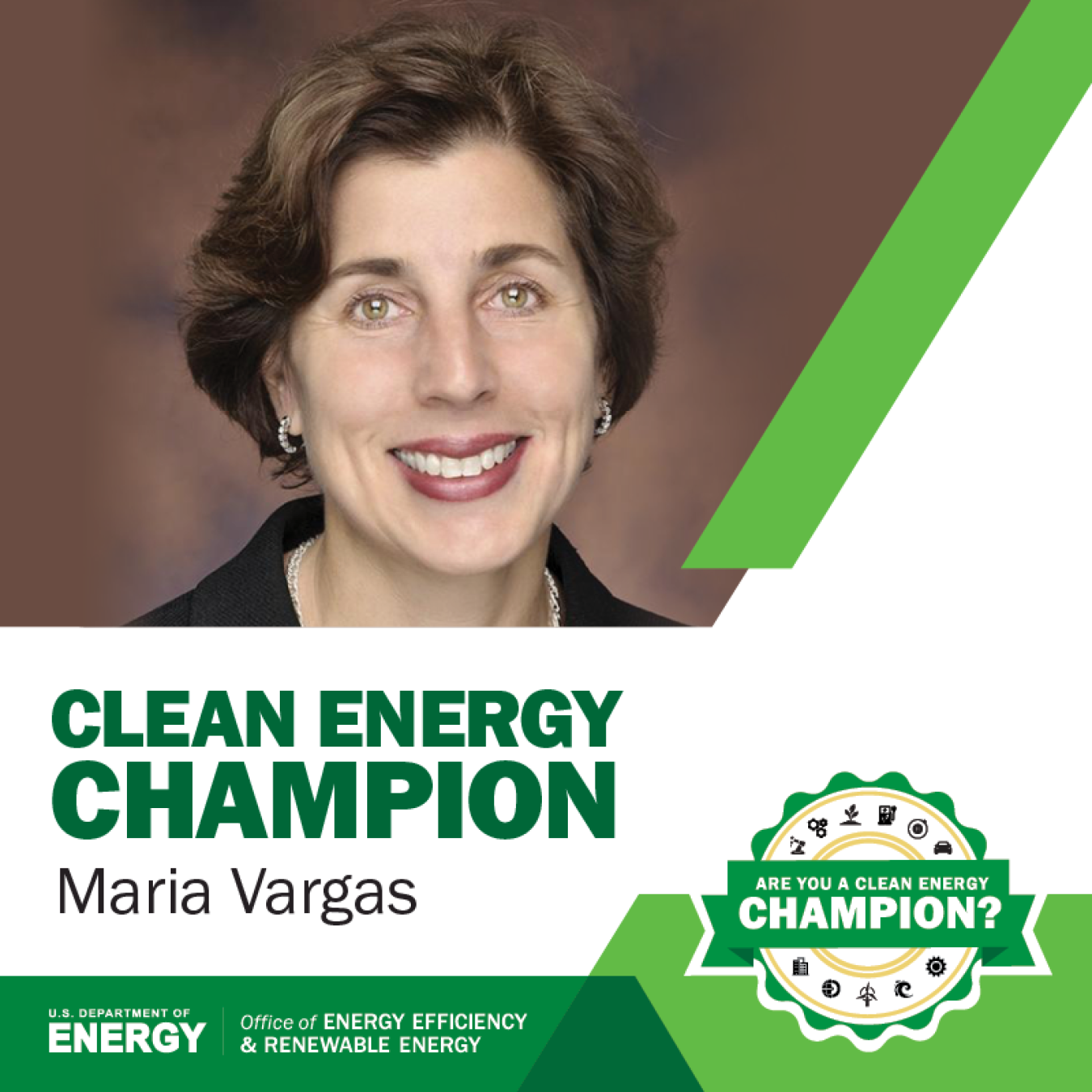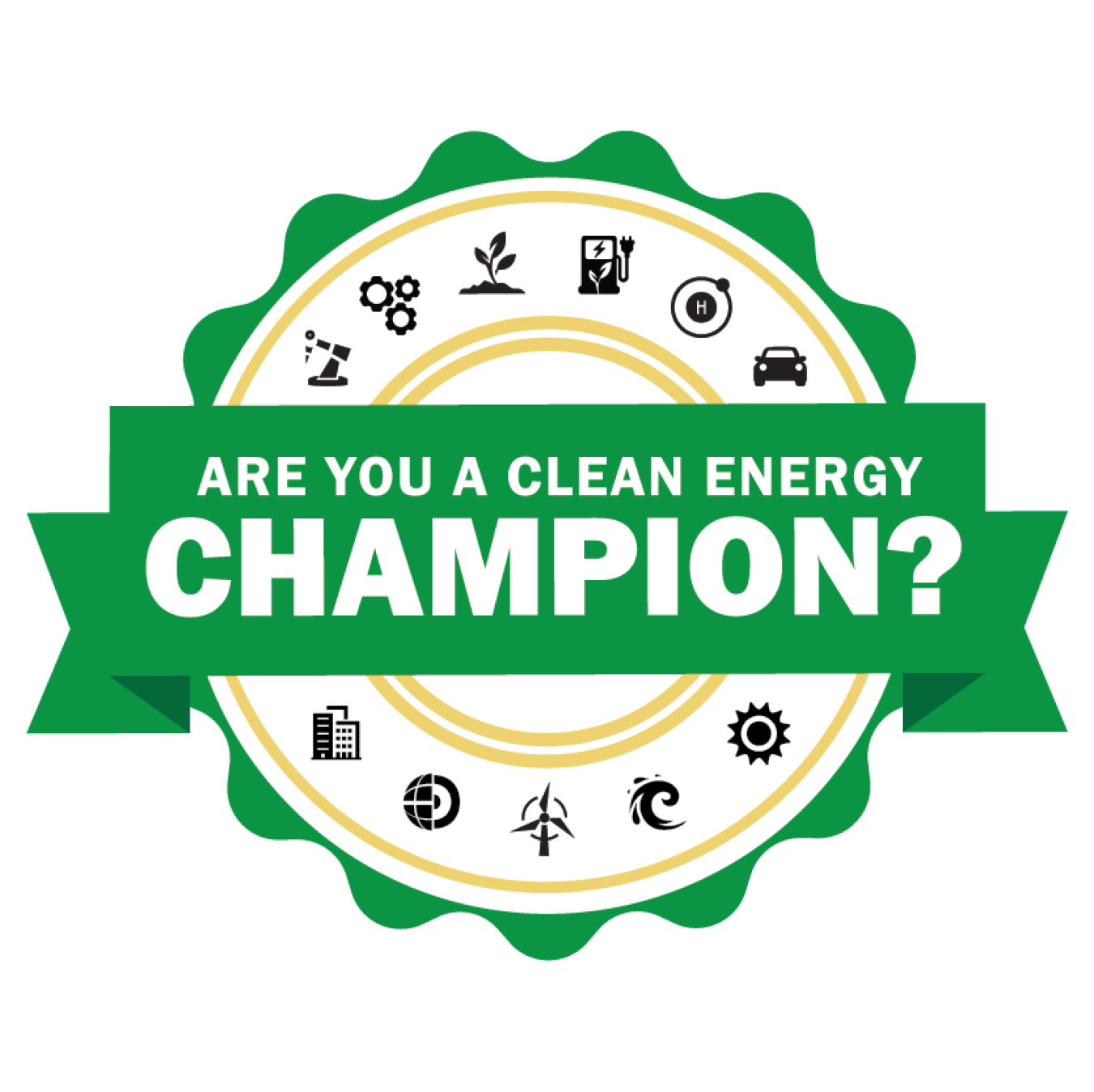
Maria Tikoff Vargas is a kind of relationship expert. She knows that the best way to advance climate solutions is having the public and private sectors work together, so she’s made a career out of forging these partnerships at the U.S. Department of Energy. For 11 years, she has served as the director of the Better Buildings Initiative, a collaborative effort to increase energy efficiency among U.S. homes, commercial buildings, and industrial plants.
DOE asked Vargas to assume this role and establish the program because she had the energy efficiency and leadership experience that practically guaranteed success. She gained much of that experience at the U.S. Environmental Protection Agency, where she spent almost 20 years managing ENERGY STAR, the brand name you see on appliances, homes, and buildings that has helped Americans avoid more than $500 billion in energy costs and cut 4 billion metric tons of greenhouse gases since 1992.
In February 2022, Vargas and her team launched the Better Climate Challenge, which encourages organizations to partner with DOE and commit to reducing their greenhouse gas emissions by at least 50% within 10 years. So far, well over 100 corporations, universities, local governments, and other institutions have made commitments; they set an emission-reduction goal, and DOE provides technical assistance to help them achieve it, along with opportunities to share strategies so others can follow suit.

Clean En∙er∙gy Cham∙pi∙on
/klēn/ /ˈenərjē/ /ˈCHampēən/
noun
1. A person or group that takes action to support or join the transition to a renewable energy economy, with the knowledge that reducing carbon emissions provides daily benefits to every American so they can live happy and healthy lives.
The potential impact of this work is so extensive that the people working behind the scenes can feel the weight of the world on their shoulders. Vargas understands this—and stays focused.
“The thing that concerns many people, including colleagues at DOE, is that we don’t have all the answers. But if we had the answers, we wouldn’t need to do this,” Vargas says. “The market needs people to demonstrate and de-risk solutions for everybody else, and this is what DOE is uniquely positioned to do.”
Directing the Better Buildings Initiative is not Vargas’s only job, though. As DOE’s lead ambassador for the Clean Energy Education & Empowerment initiative (C3E), she works to close the gender gap in clean energy leadership and elevates the successes of women in mid-career—a point at which many women leave the workforce. Since 2012, C3E has presented annual awards and cash prizes to approximately 90 women in recognition of their achievements across disciplines in clean energy. Vargas says these days, more people are participating in C3E, and the list of nominees for awards grows every year.
Having spent more than 35 years in public service working in the climate and energy space, Vargas is well aware of the benefits of energy efficiency and clean energy. She has a plug-in hybrid car, although she walks and bikes as many places as she can. At home in her low-ceiling basement, she has “an LED lamp testbed” where she does her own “little experiments” with different light bulbs to see which work best.
Similarly, testing is required to learn what works best for decarbonization across the country. (DOE funds research, development, and testing of innovations that can help decarbonize the economy.)
“We have to reduce emissions in our buildings, our plants, and our homes, and it is going to be different depending on whether you are in Miami, Minneapolis, or Malibu, and depending on the kind of building you have and how you get your energy,” Vargas says. “That is why we are doing the Better Climate Challenge. We have to make sure we’re availing ourselves of all the talents in the market that can help us do that. That’s why C3E is important. It’s a nice complement to how we can continue to advance women’s role and solve these problems. I’m glad we have these partnerships to do it. Everyone can be part of the solution.”
